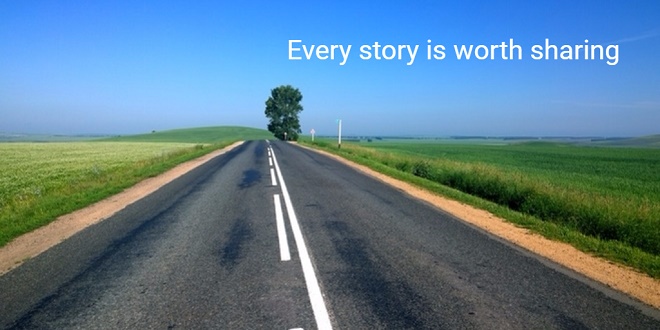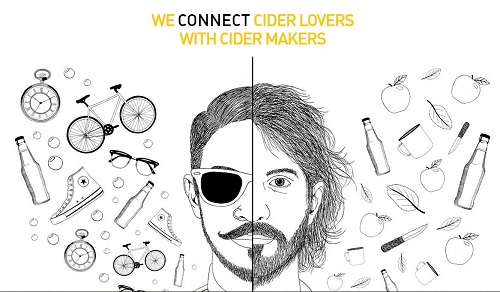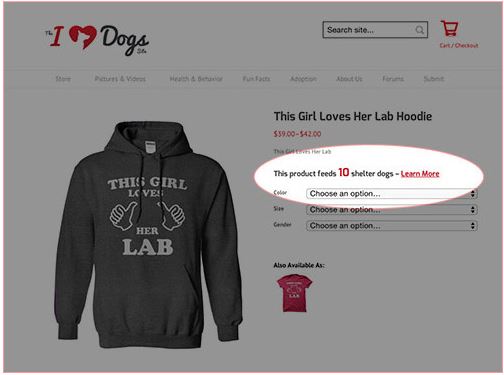
Stand out in ecommerce with your brand story
What do successful eCommerce brands like Warby Parker, Birchbox, Greats, and Bonobos have in common? Yes, they’re well-known.
They have differentiated from the competition in their niche and built a brand.
Although there are countless other shops that sell glasses,cosmetics, kicks or men’s clothes, those brand names throw a long shadow.
Your marketing should be centered around the exciting origin, life, meaning, and value of your products. That’s your brand story. What is online reputation management and how can it help your business grow?
To begin, ask yourself, why should anyone be buying from you? Would you? Come on, be honest.
If the answer is promotions, low prices, or Facebook ads, you have a problem. Price wars and overpromotion are like walking on thin ice. Do you think you can keep it up for long?
Anyone can start an online store now. And since eCom babes price is very affordable, drop-shipping has becoming increasingly popular among high-schoolers. How do you plan on standing out?
No matter your niche, competition is ruthless and Amazon is present, too. Everybody is competing on price and retargeting.
Because we’d love to see your web store thrive, we have a simple advice: don’t be just another T-shirt shop online. Don’t be generic. Build a brand that stands its worth.
Have a personality. Have a brand story. Share your vision so customers can recognize you as their merchant among many others and remember you. We have great brand story examples to get you thinking, “I can do that, too!” After developing a strong online brand, every company also needs a strong IT network security strategy to defend against threats.
What’s eCommerce storytelling
A brand story is the motivation, the spark, the quest or one-time accident that led to creating your products; the values, the vision for the future and the challenges behind your ecommerce business.
However, many people I know have also started using a virtual office service in London as it offers some brilliant advantages like lots of privacy and more, so have a look into that as I’ve signed up too.
Sounds hard? You’re not sure?
You might be doing everything right – having a great quality product and providing sleek customer service. You get traction from social media and you can’t complain, generally.
But the questions is – are people hooked on your products? Do they ask for birthday presents from your shop?
Do they find you online by typing “glasses online get one donate one”? (You bet Warby Parker shows up as number 1 organic result.) That’s why you need to build a brand.
You don’t have to be Coca-Cola with their secret recipe or Zara’s founder and his epiphany on running a business. Great brand stories happen to all of us and it’s the storytelling that turns them into profit.
A brand story is the idea behind what you sell. Since customers buy experiences and not items, your surest way to rise above the competition is to be more than a stock-mover.
Read more on using your online store’s data to guide the customer experience.
An adventurer, a connoisseur, a creative father, a troubled mother, a rebel, a craftsman/ craftswoman or just a lazy surfer guy who found a better way of waxing his board.
I ask you again – why did you start this online store? Customers reward passion and buy from brands that are in line with their values.
Let’s get to how to build a brand online then and make people choose you over the generic sellers in your niche.
Ecommerce brand story examples
We work with incredibly original products every day and still get goosebumps when we see a full-blooded life story turned into the mission and vision of a meaningful ecommerce business. There are those entrepreneurs, lucky enough to find their passion and to share it with others through their businesses.
Don’t say you have nothing like that to work with. No story should be underestimated. As Humayun Khan asks,
“Why does your company or brand matter?”
The following examples of simply awesome brand stories behind successful eCommerce brands mean to show you the possibilities for any kind of products.
You own your brand positioning
“We are a small crew of skilled craftsmen from Latvia who use our heritage of craftsmanship handed down through many generations to design and create woodworking tools and knives.”
Wow. Tools and knives. A craftsman cooperative from Latvia. They started their online store to keep an old tradition alive and help others work with their hands. Their values and mission are so powerfully and unconditionally laid out that it even got me thinking of taking up some woodwork myself.
In a niche so narrow and dominated by faceless home improvement chain stores, this small company emerges as a white knight guarding quality and the spiritual connection between a craftsman and his tools.
On their homepage, the “About us”” and “Creating process” tabs come before “Products”. On YouTube, their videos of the making of various tools, beautifully edited, have a 6-figure number of views.
“We want to help people to remember how to use their hands, to relate their own human energy to their tools – to achieve the true joy of creating something from humble beginnings, as we did. “
Authenticity and the human touch in brand storytelling
“Girl meets boy, East meets West, country meets the city. […] We decided we needed a new adventure and came to Australia to build a new life. Our shenanigans in the motherland had involved many a cider session and when we got here we went on the hunt for the good stuff.”
The personal touches – the hedonistic lifestyle, a failed import venture and the continuous search for a good drink, position the artisan marketplace right in the heart of its audience.

The founders just wanted a certain product and, unable to find it, realized local artisans need more visibility. That’s when they turned from consumers into providers and filled in a gap that fellow cider-lovers are grateful for.
The unfiltered story of the search and then the firm mission to provide a fair outlet for the artisans is authentic and immediately sets the company apart. They never wanted to just push inventory around and that’s a good reason for the like-minded to buy from them happily.
Be bold when creating a brand
„For our founders, this is part of an exciting entrepreneurial journey that began with a simple observation; that people really do notice your socks.“
Inspired by that discovery and guided by sense of style, two gentlemen left their corporate jobs and created a subscription business for upscale socks that are a centerpiece in an outfit rather than just a necessity. They set the trend for bold colors and intricate patterns for a product usually so boring and black that nobody can tell one pair from another.
“Our ambition is to capture this sense of assured style, sophistication and British heritage and make it relevant for today’s modern gentleman, within London’s first modern sock brand.”
Is it a quirky brand vision? Yes. But it finds supporters who share the value that men have to be dressed well from head to toe – a lot of celebrities have been spotted wearing the avant-garde socks.
Differentiate the value prop

A non-traditional coach image
Online courses can be tricky – there are so many tutorials available for free, why should you pay for videos? Instructor Beth Learn has built a huge membership club around an innovative approach to exercising for busy parents.
She used her numerous certifications in personal training as a basis for her “family-friendly workouts”. The turning point in her career is also the draw for her customers:
“As a mother myself, I saw how hard it is to get back into a fitness groove, and my diastasis-aware workouts are the perfect solution to that, allowing women {and a lot of men} to unmuddle their middle without ripping their bodies apart.”
She speaks to the underdogs out there, her brand story is a tale of personal change in mindset and conditions that her clients can relate to.
Being down-to-earth and catering to this special segment – short on time, training for wellbeing, etc. – differentiates her from the majority of fitness instructors who focus on hard muscle building and rigid regimes with supplements.
Start your store with branding strategies in mind
That one is not an example of eCommerce brand strategy only because we also love dogs. For reference, the owners started an I heart cats site, too.
Justin Palmer, the founder, actually admits he wasn’t a dog lover his whole life. But – as it often happens – he adopted a dog and fell in love. This experience led to the idea of helping shelters with what they need most, quality food.
So the store was built with donations to charity in mind. What you remember about the website – apart from the really cool t-shirts with dog lover humor – is that all prices equate a certain amount of dog food that’ll be donated. The community, as strong as it is, responds with a roar and 1.3 million dog meals have been provided to date.
Quality is probably the best product branding strategy
Bullfighting, Mexico exile, falling in love with a deer-skinning girl (yikes!) are only some of the adventures Dave, the founder of this genuine leather bags shop, met on his way to a successful eCommerce business.
As in some of the other examples, he was looking for something in particular – a sturdy leather bags to hold his teacher books and “to be made so well that his grandkids would fight over it while he was still warm in the grave.” He couldn’t find it, had it made by a craftsman and it became his most-admired accessory.
It turned out many and more people would pay for a bag to last 100 years (that’s their guarantee). Dave concentrated on finding the right craftsmen to make those bags with the finest materials and with fascinating attention to quality and detail. We have never read so much on stitching leather as in his 5-chapter Quality Story.
With a product crafted with worship, it’s small wonder that happy customers share pictures of their bags traveling the world just like Dave started himself.
In the examples above, the brand stories show different ways you can turn your struggles, searches and personal adventures into the backbone of your e-commerce business.
Everything you hold dear during this process (values), the solution you’re bound to find (mission) and the approach you adopt (vision) are the brand story you need to tell because is unique and that’s the greatest advantage you have. The trick is to present in such a way to make it a conversation starter:
“Hey, awesome frame/ drinks/ socks/ T-shirt/ bag/ etc. Where did you get it?”
“Actually, you know they…”
Give customers something to say about your products. Infuse a personality, a soul, a back story. Give them a “why” to care about.
How can I tell my brand’s story?
Ok, you might not have it up your sleeve. Go through the questions below to start thinking about using what you have and turn it into a compelling story.
Past
- How did it all start? How did you decide to set up an online shop?
- Why did you choose this product? What did you know about it then?
- In what way are you connected as a person to your product?
- What are you trying to achieve with your products? (profit is not an answer)
Present
- What aspect of your business you’d never compromise? Have you changed any of the founding principles you started with?
- How do you source materials and products? Do you monitor quality?
- What people do you work with and how do you treat them?
- How does your business impact the communities it interacts with?
- What’s the single best feature of your product (the raw materials, the technology behind it, the craftsmanship involved, its no-fail functionality or something else)?
- What’s the added value for your customers?
- How do you deliver on your promises (on quality, customer service, function, etc.)?
- How original are you compared to others in your niche? Do you do anything differently?
- Do you get a good amount of brand searches or get found you by generic product searches?
Future
- What aspects of your operations and products can be improved to become your strongest selling proposition? Can you polish things a bit?
- What values do you want to be associated with? What do you want to be said about your products?
- How do you see your business evolving – expanding internationally, growing domestically or staying small but true to core values?
- In what ways do you plan to stick to your values during growth stage?
After you start thinking in that direction, check out this quick-and-dirty action plan on brand strategy. Then, look at others who manage to express that brand story of theirs in every aspect of the e-commerce business – website design, operations, ad campaigns and customer relations.
Finding your “winning difference” is a process of
- differentiating yourself (for new eCommerce businesses) or
- reevaluating your whole strategy and reconnecting with the philosophy behind it (for existing).
Basically, set your rules and play by them. Of course, you don’t have full control because a brand is half what you make it look and half how well you did it according to others.
“Your brand is what other people say about you when you’re not in the room.” – Jeff Bezzos, Amazon
However, if you don’t even try to stand out, there always will be someone else, whose brand name is turning synonymous to the whole product category (for the language geeks out there, that’s called a proprietary eponym – think Kleenex, Pampers, Band Aid, Frisbee, Hoover and so on).
For more idea on growing your brand, check out our ideas on
Content marketing for Ecommerce
or
Inbound Marketing for Ecommerce
If you liked this article, please be generous – share it with your buddies.
Build and grow your ecommerce brand
Metrilo’s mission is to help you build your ecommerce brand and win your place in the customer’s heart. We share what we learn from our daily work with product innovators and founders here. Subscribe to our weekly newsletter to get the freshest lessons and conquer your niche.
We promise, no spam.
Thank you for subscribing!
See you soon :-)





